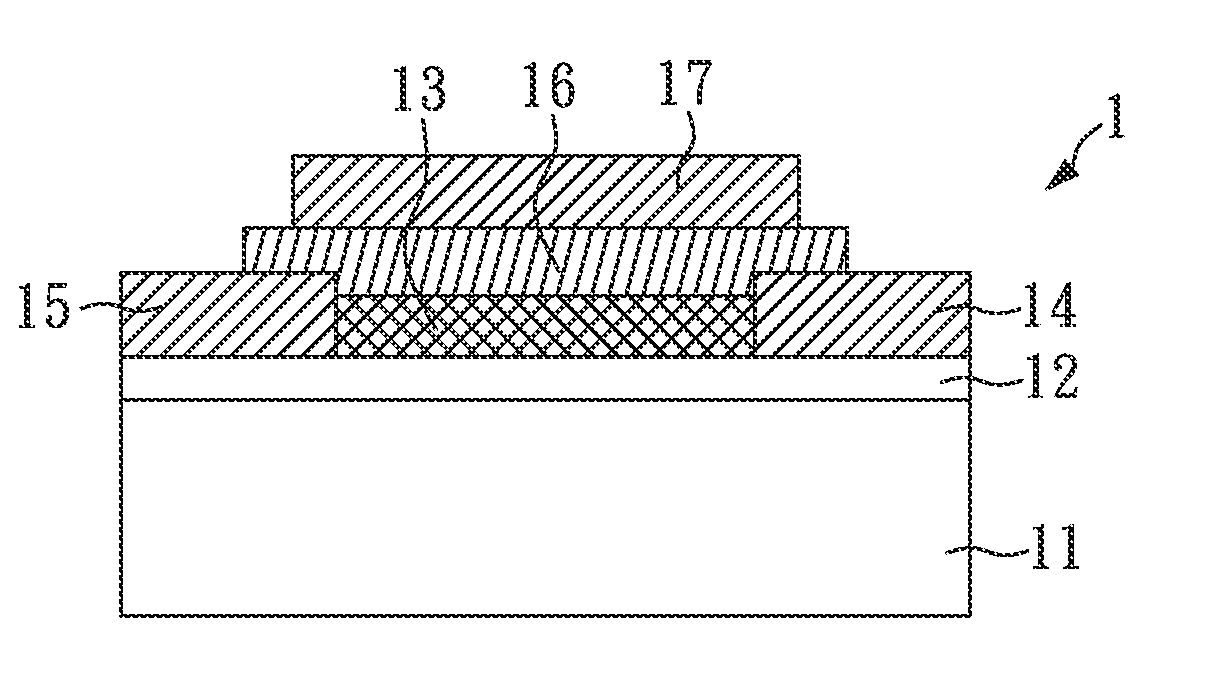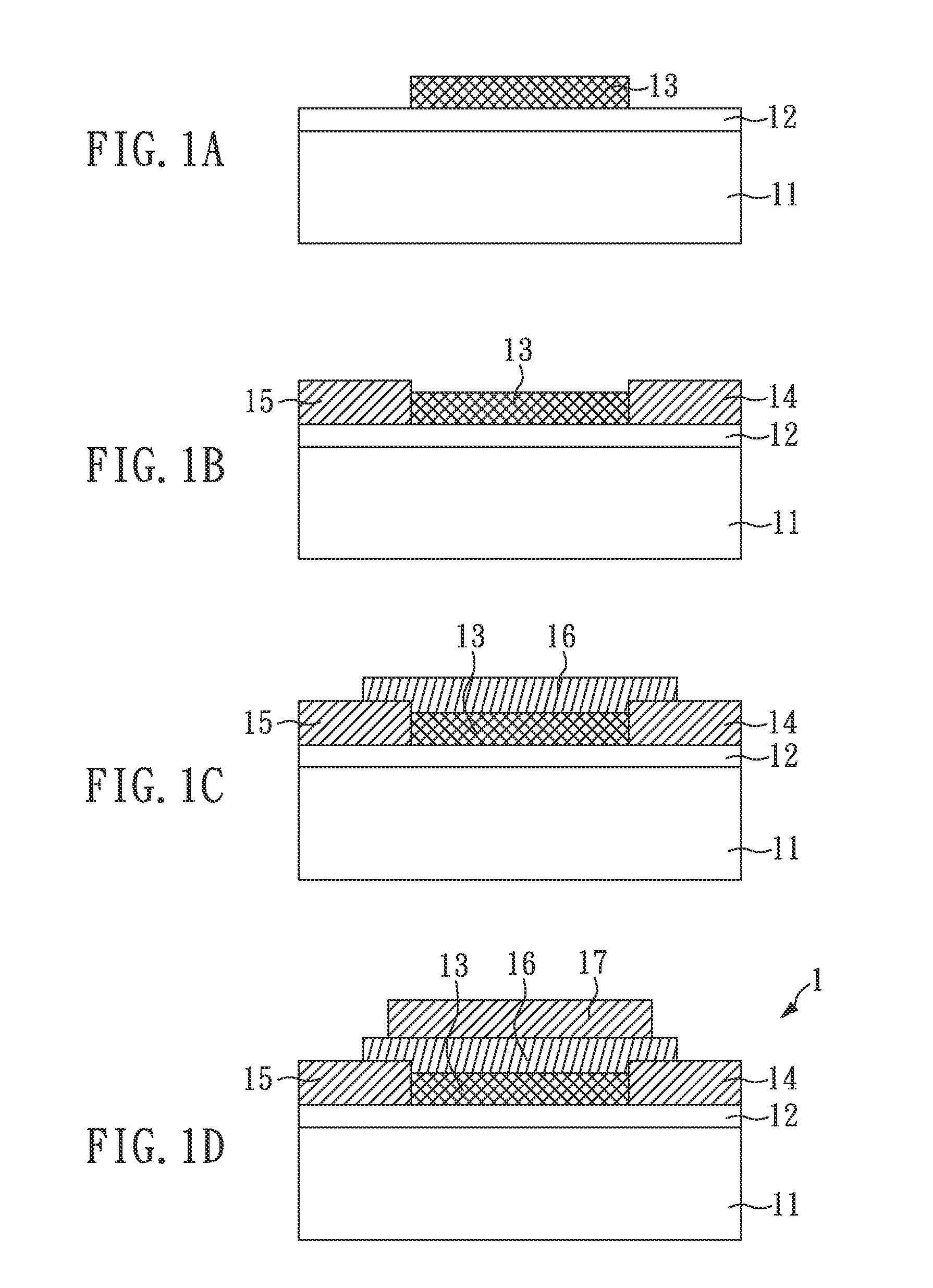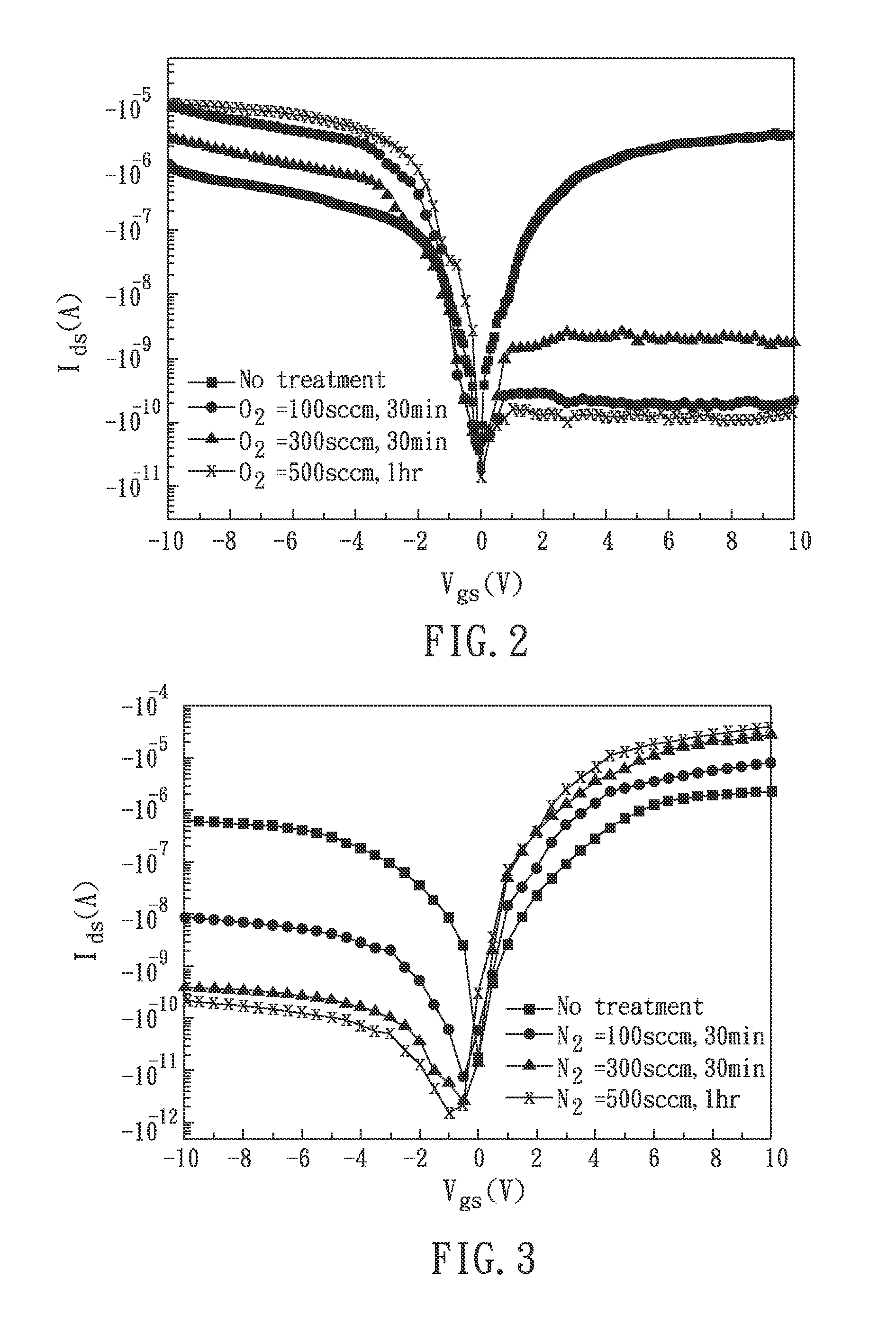Method of Fabricating Thin Film Transistor and Top-gate Type Thin Film Transistor
a technology of top-gate type and thin film transistor, which is applied in the direction of semiconductor devices, electrical devices, nanotechnology, etc., can solve the problems of increasing the work function of metals, the opposite electron hole of negative voltage electrons would turn to be cut off, and the inability to directly apply this treatment to the manufacturing of thin film transistors
- Summary
- Abstract
- Description
- Claims
- Application Information
AI Technical Summary
Benefits of technology
Problems solved by technology
Method used
Image
Examples
embodiment 1
[0040]As illustrated in FIG. 1, it is first provided a silicon substrate 11 (step A) comprising a surface having a silicon dioxide layer 12, and on the silicon substrate 11 herein there is a single-walled carbon nanotube thin film 13 of a thickness of about 200 nm as deposited by a ACCVD device. The pattern of the passage region on the single-walled carbon nanotube transistor (step B) is defined by a photolithography technique and an etching technique. Next, as shown in FIG. 1B, a metal electrode layer (20 nm of gold / 300 nm of titanium) having a drain electrode 14 and a source electrode 15 is formed by a metal deposition system and a lift-off lithography. Afterwards, a hafnium oxide layer (HfOx) 16 deposited to be of about 10 nm by a sputtering device is made an oxide gate electrode of the transistor, as illustrated in FIG. 1C (step C). Afterwards, photolithography and dry etching technique etch the hafnium oxide layer 16 to form a contact hole containing a drain electrode 14 and a ...
embodiment 2
[0045]An identical method of fabricating a top-gate type thin film transistor as disclosed in embodiment 1 described therein, but the oxygen flow rate of step D for oxygen annealing treatment is 300 sccm, in stead of 100 sccm.
embodiment 3
[0046]An identical method of fabricating a top-gate type thin film transistor as disclosed in embodiment 1 described therein, but the oxygen flow rate of step D for oxygen annealing treatment is 500 sccm, in stead of 100 sccm, and the duration is 60 minutes, in stead of 30 minutes.
[Control Group 1]
[0047]An identical method of fabricating a top-gate type thin film transistor as disclosed in embodiment 1 described therein, but the step D is precluded, and the oxygen annealing treatment is precluded.
TABLE 1P-Type FETField-EffectOperationTransconductanceMobilityOn-off CurrentMeasurement(μ)(cm2 / Vs)RatioControl group 13.252.74~105 Oxygen flowing5.496.67105at 100 sccm,annealingduration for 30minutesOxygen flowing9.7172.57105~106at 300 sccm,annealingduration for 30minutesOxygen flowing10.6189.03106at 500 sccm,annealingduration for 60minutes
[0048]FIG. 2 shows the change in behavior of the transistor part property in response to changes in the hafnium oxide layer with different parametric co...
PUM
 Login to View More
Login to View More Abstract
Description
Claims
Application Information
 Login to View More
Login to View More - R&D
- Intellectual Property
- Life Sciences
- Materials
- Tech Scout
- Unparalleled Data Quality
- Higher Quality Content
- 60% Fewer Hallucinations
Browse by: Latest US Patents, China's latest patents, Technical Efficacy Thesaurus, Application Domain, Technology Topic, Popular Technical Reports.
© 2025 PatSnap. All rights reserved.Legal|Privacy policy|Modern Slavery Act Transparency Statement|Sitemap|About US| Contact US: help@patsnap.com



